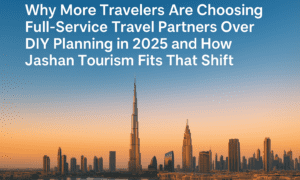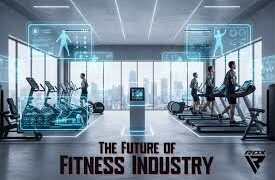When it comes to web design, trends come and go—parallax scrolling, animated cursors, bold gradients—but one principle is reshaping the future in a more lasting way: purpose-driven design. As businesses battle for attention in saturated digital markets, a design that prioritizes function over flash is proving to be the difference between a user bouncing and a user converting.
But what exactly is purpose-driven design, and why is it emerging as a core strategy for successful websites?
Defining Purpose-Driven Design
Purpose-driven design places strategic intent at the heart of every visual and structural element on a website. Rather than designing just to impress or follow trends, it’s about designing to achieve clearly defined goals—whether that’s capturing leads, driving sales, educating an audience, or strengthening brand loyalty.
This approach aligns the user journey with the business’s objectives. Every color, button, section, and headline is carefully considered to guide users toward a desired action, reducing friction and amplifying impact.
Moving Beyond Pretty: Why Aesthetics Alone Don’t Convert
It’s easy to be dazzled by a website that looks beautiful, but beauty doesn’t always lead to performance. Many websites win awards for creativity and design flair, yet struggle with high bounce rates, poor conversions, or confusing user experiences.
Purpose-driven design doesn’t sacrifice aesthetics—it integrates them. But visual appeal is used in service of clarity and usability, not at the expense of them. A clean interface, intuitive navigation, and persuasive messaging are often far more powerful than unnecessary flourishes.
For example, a service-based business benefits more from a clear call-to-action, a trust-building testimonial carousel, and a responsive contact form than from elaborate animations that slow load times.
Understanding the User’s Mindset
Modern web users don’t arrive at a site to admire its design—they’re there to solve a problem, find information, or make a decision. Purpose-driven design starts with understanding this mindset and crafting an experience that feels natural and rewarding.
This means:
- Mapping user journeys to reduce confusion
- Prioritizing mobile optimization for on-the-go audiences
- Highlighting what matters most early in the scroll
- Using visual hierarchy to steer attention without being intrusive
These are all small decisions that, when made intentionally, result in a website that “feels right” to users—and ultimately converts better.
Conversion-Focused Features That Work
A purpose-driven approach often brings clarity to the kinds of features that actually move the needle. Common elements include:
- Clear value propositions above the fold
- Strategic placement of call-to-action buttons
- Live chat integrations or intelligent contact forms
- Speed optimizations for lower abandonment rates
- SEO-friendly structures that attract the right traffic
By centering design decisions around these goals, websites become tools of growth—not just digital brochures.
Emotional Loyalty: Creating Experiences, Not Just Discounts
While traditional loyalty programs often focus on cost-saving incentives, digital platforms today aim to build emotional loyalty—an attachment to the brand that goes beyond transactions.
Exclusive member content, early access to products, gamified challenges, social recognition, and experiential rewards are now central features of many digital loyalty schemes. These elements create a sense of belonging and excitement, helping brands cultivate communities rather than just customer lists.
For example, a coffee chain might offer digital badges for visiting multiple locations or seasonal challenges with limited-edition merchandise. These features don’t necessarily provide monetary value but reinforce the customer’s emotional tie to the brand—something that price-based incentives alone can’t achieve.
Why Businesses Are Embracing It Now
Today’s digital-first economy has made websites one of the most important customer touchpoints. It’s the first impression for many businesses—and sometimes the only one. There’s no room for guesswork.
That’s why more organizations are turning to specialists who understand the importance of aligning design with outcomes. Companies like Vilo Web Development, which specialize in purpose-driven web design & SEO, are helping brands create websites that do more than just look good—they work strategically to attract, engage, and convert.
It’s also a more sustainable approach. By building a site that’s designed to perform rather than impress, businesses can ensure that it continues to deliver results long after the initial launch.
Final Thought
In a digital world where attention is fleeting, and competition is fierce, the future of high-converting websites isn’t in flashy gimmicks—it’s in thoughtful, goal-oriented design.
Purpose-driven design delivers more than beauty. It delivers value—to users and to the businesses behind the site. And as expectations for performance, speed, and clarity continue to rise, this approach will only become more essential to long-term digital success.





























